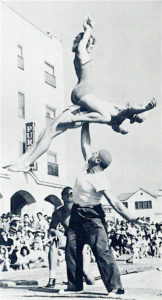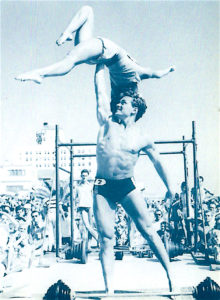The Turkish Get Up. One of the “Holy Grail” exercises in the kettlebell world often approached with a mystifying reverence about its romanticized ancient origins. It’s been an exercise over complicated, branded, and even named after certain ego-centric modern personalities, yet as it was explained to me by a wrestler when I first learned it long before ever hearing about a kettlebell…“JUST GET UP!” When my friend Joe put that 25 pound dumbbell in my hand at the park about 15 years ago and told me to just get up–I felt like I was being stepped on by an elephant. What an amazing task to “just get up.” How metaphoric too…just get up…sometimes that is really all that is needed.
I like to think of my fitness training as mostly practical in the sense that most of what I do should transfer into survival skills. I should be able to use my “fitness” training to save my life or someone else’s life. Natural disaster, road emergency, violent attack, or whatever life delivers–in the moment of truth, the seated dumbbell curls and six-pack glamour show ABS won’t be enough. Ironically, this “practical” approach is way more fun than my former “fitness work my arse off” approach too because I’ve adapted into so many vintage tools and methods that are so much more productive for brain, body, and yes, for survival and real movement outside of the gym.
On the practical side, “if” you had to do a movement like a Turkish Get Up in the real world, it damn sure won’t have a convenient handle attached to it. Let’s think playfully and practically about using various tools, implements, and in the case of vintage Muscle Beach in Santa Monica–even a fellow human (or two) might do if you can “handle” it. 🙂
While there are some good fundamentals of performing the Turkish Get Up movement, there is NO ONE WAY to do this exercise–nor should there be “one way.” If you like this sort of movement, consider exploring using different tools, surfaces, natural conditions, etc. For example, using the medicine ball in the high winds in the video above was the most challenging. The ball is round which required a great deal of wrist mobility and a lot of fine motor control in fingers and hand to keep the ball from blowing off. This sort of challenge is going to be vastly different for the smaller connections of the shoulder, arm, and back. Using the ball is also fun as your body learns to adjust to a more dynamic object than the round kettlebell with fixed handle.
Keep it simple…JUST GET UP in a way that helps “your body” get better.
*Vintage Muscle Beach photos courtesy of Glenn Sundby
Ron Jones, MS
Historical Kinesiologist
Physical Educator
ron@ronjones.org
661.993.7874

